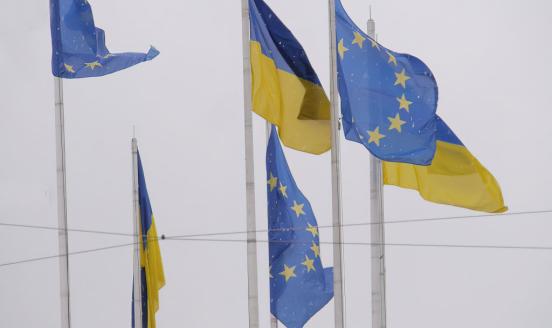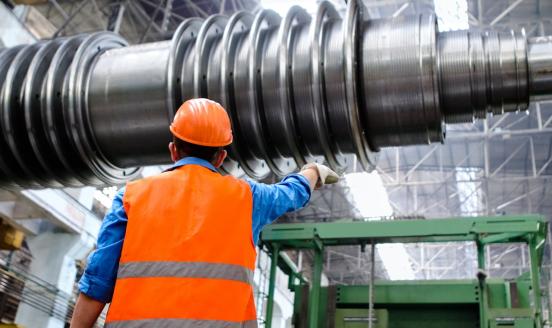What the EU should do and not do on trade in medical equipment
The European Union has introduced export controls on some medical supplies. This was a mistake. It should announce that it is withdrawing the measure,

After the 2009 avian-flu pandemic, which killed more than 150,000 people worldwide, and the 2014-16 Ebola epidemic, which killed more than 11,000 people in Africa, many voices in the health community warned that, despite huge progress in medicine, the world was vastly under-prepared to respond to a global pandemic like the 1918 Spanish flu.
Unfortunately, the warning remained largely unheeded. Like elsewhere, the response of health systems in Europe to COVID-19, although admirable, has been inadequate. In several countries and regions, medical facilities and testing capabilities are under severe strain. There are also acute shortages of basic medical equipment such as masks and ventilators.
Faced with such shortages, many countries have taken steps to ban or limit the export of medical equipment or medicines that are vital to fight COVID-19. According to the Global Trade Alert, as of 21 March 2020, 54 governments had introduced export curbs on key medical supplies since the beginning of the year. Some European Union countries have even introduced bans or limits on exports within the EU.
Faced with this situation, the European Commission has taken some good, but unfortunately also some bad measures.
Internal Market Commissioner Thierry Breton has written to member-state ministers, complaining that unilateral measures implemented by EU governments were disrupting the free flow of essential medical equipment within the EU. During a Bruegel/FT event, he admitted that some of these measures are still in place and explained what the Commission has been doing to try and increase the production of vital medical equipment in Europe with the limited means – essentially moral pressure – at the European Commission’s disposal.
It was surprising, therefore, that on 14 March the Commission adopted an implementing regulation restricting the export outside the EU of five categories of personal protective equipment (PPE) used by medical personnel: protective spectacles and visors, face shields, mouth-nose-protection equipment, protective garments, and gloves. The regulation applied initially to all non-EU countries, including preferential partners, but EFTA countries (and the United Kingdom) were later exempted. The decision to place barriers on extra-EU exports seems to have been, at least partly, conceived as a quid pro quo for the agreement by member states to remove barriers to intra-EU trade, or for not implementing new ones. But the logic of closing external borders in order to keep internal borders open, which seems to have been borrowed from the refugee crisis, makes no sense because trade, unlike refugees, works two ways: exports and imports.
As Chad Bown, from the Peterson Institute for International Economics, has shown, the EU is both an exporter and an importer of the products that it has now subjected to export controls. According to Bown’s calculations, in 2019, the EU exported $12.1 billion and imported $17.6 billion worth of these products. The breakdown of trade by product category is shown in the table.
Table 1: Extra-EU trade in medical products now subject to export controls, 2019 ($ billions)
| Exports | Imports | |
| Protective spectacles and visors | 0.2 | 0.5 |
| Face shields | 7.4 | 6.7 |
| Mouth-nose-protection equipment | 0.9 | 2.1 |
| Protective garments | 3.1 | 4.5 |
| Gloves | 0.4 | 3.7 |
| TOTAL | 12.1 | 17.6 |
Source: based on Chad Bown.
Cutting exports to foreign partners is risky for two reasons. First, it endangers countries that are also suffering from COVID-19, especially those that rely heavily on supplies from the EU. Second, it could endanger the EU itself if foreign partners are unable or unwilling to supply the EU with the medical products it needs and cannot produce. Retaliation by foreign partners could even lead to the breakdown of regional and global value chains for essential products.
Not surprisingly, the EU measures were immediately criticised by several trading partners, including neighbours like Norway and Switzerland, which rely heavily on the EU for their supplies of PPE covered by the regulation. Consequently, the European Commission issued on 20 March a Communication stating that “in view of the deep integration of the internal market with all four member States of the European Free Trade Association (EFTA), as well as the integration of the production value chains and distribution networks with the same countries, the Implementing Regulation does not apply to exports to those four countries, which thus remain unrestricted”. [1] But obviously value chains do not stop at the borders of these four countries, so the potential for disruption arising from the EU export controls remains.
As well as irritating some countries, the EU measures could also backfire. They contribute to the deterioration of the international trade climate at a time when international cooperation is most needed because of the global pandemic. Clearly, no jurisdiction can solve the health and the ensuing economic crises on its own. Unfortunately, global leadership is at an all-time low, which also explains why, contrary to what happened early during the financial crisis, there has been no global commitment to abstain from protectionist trade measures. After considerable delay, however, it was announced on 24 March that an emergency G20 virtual summit on the pandemic will be held tomorrow, 26 March.
The European Union should announce at the summit that it is withdrawing its export controls on PPE, and call on all countries to remove export curbs on medical supplies and abstain from imposing new ones.
[1] The four EFTA countries are Iceland, Liechtenstein, Norway and Switzerland.



